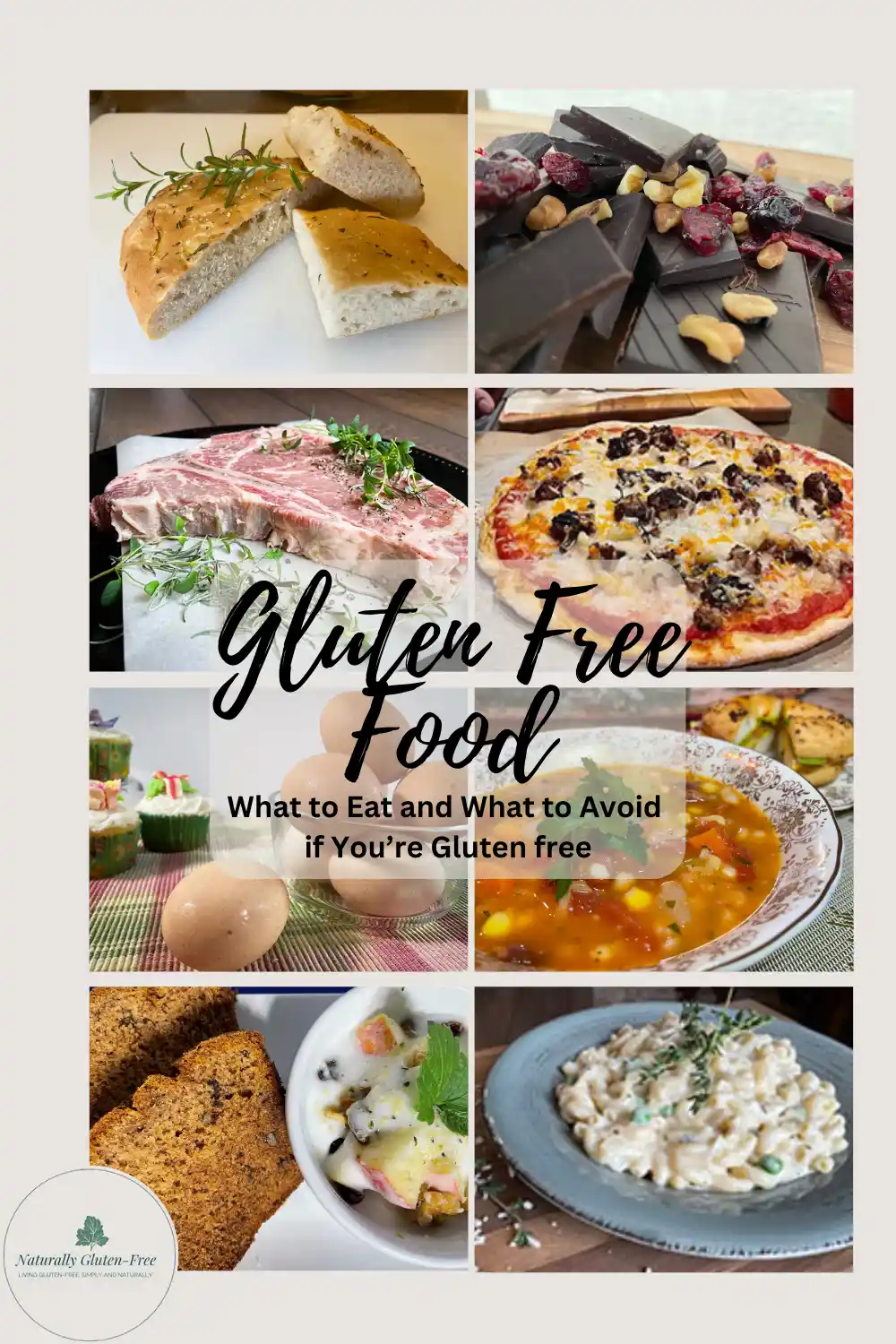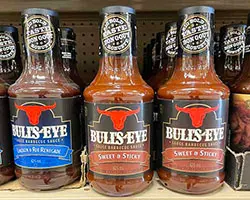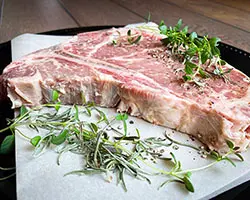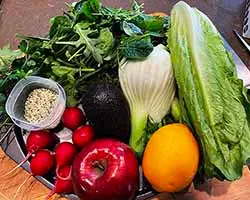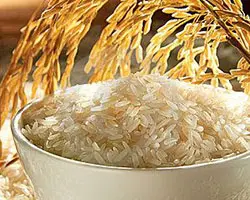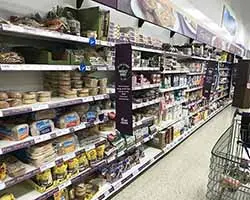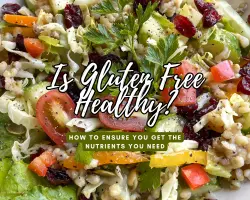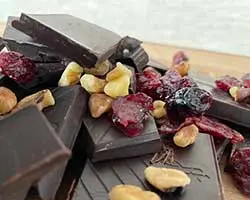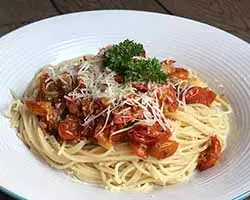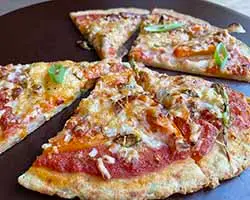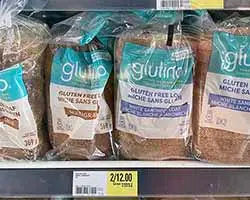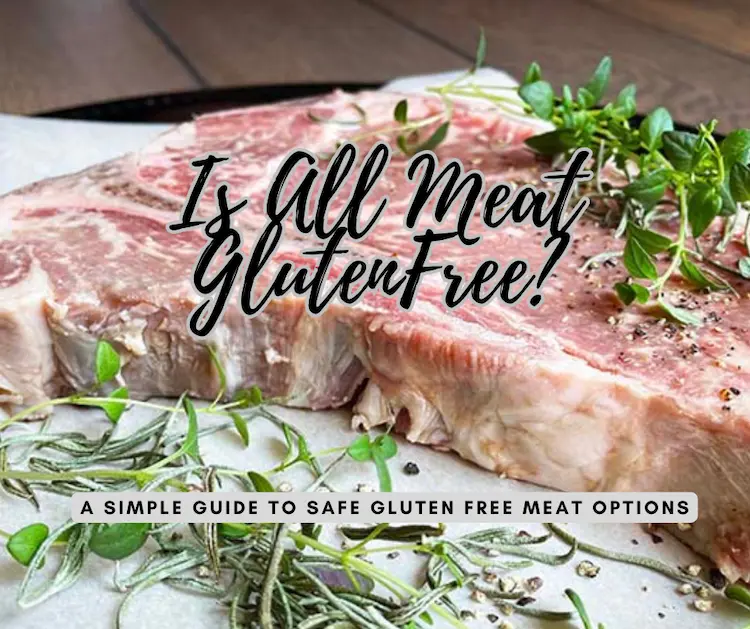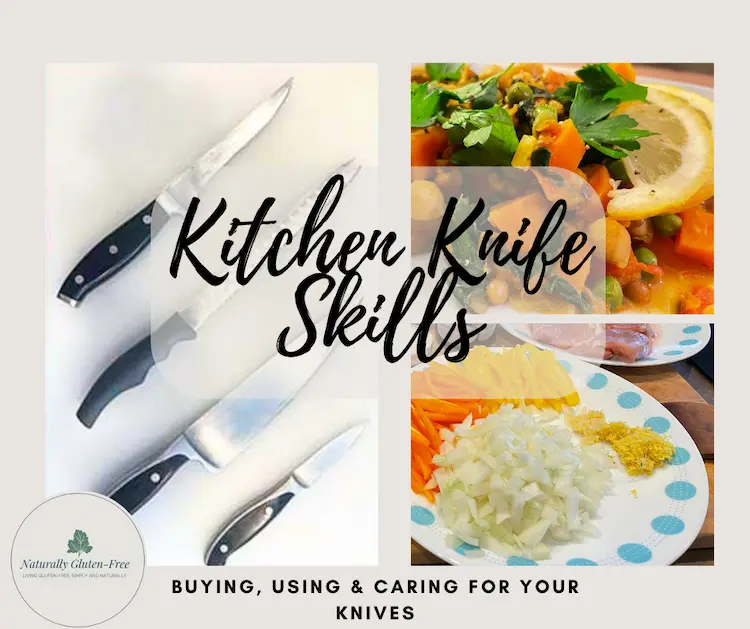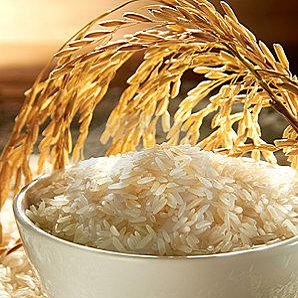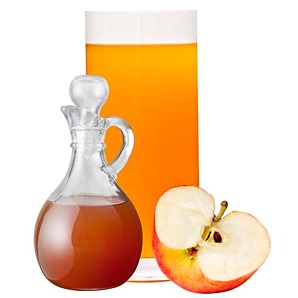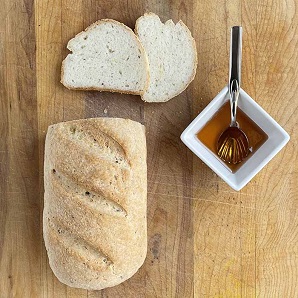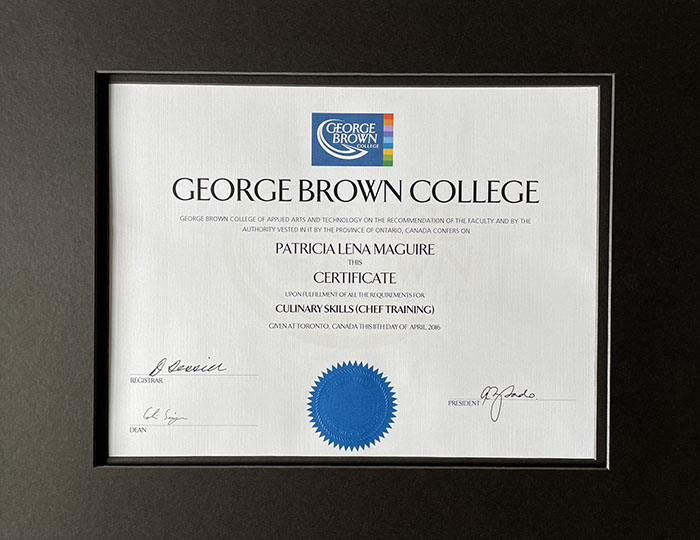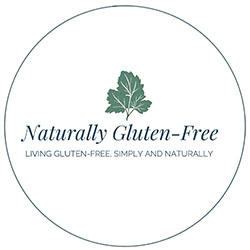- Home
- Gluten Free Food
Gluten Free Food: What to Eat and What to Avoid if You're Gluten Free
Have you seen all your favorite comfort foods pass before your eyes since going gluten free? Well here is some is good news! Gluten free food is just food, and most food is gluten free.
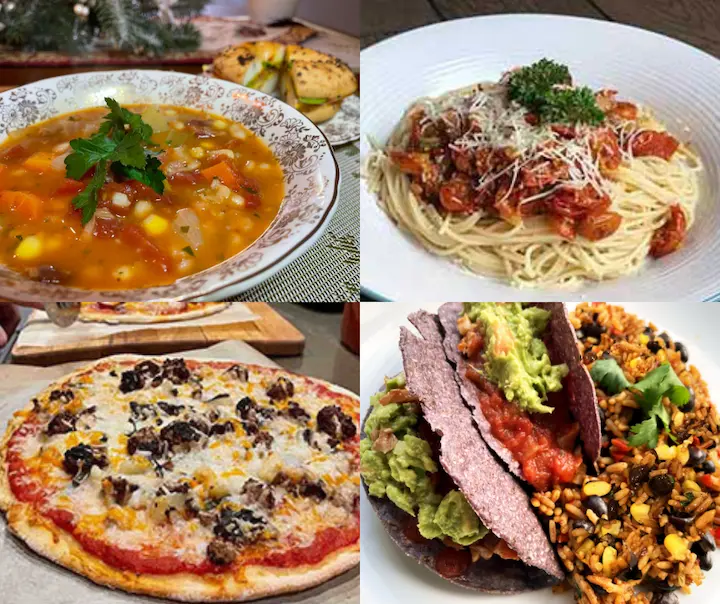
That's right. It's not weird, it's not magic, and it's not that hard once you learn what to look for.
So stick with me, I'm going to help you sort out what to eat and what to leave behind when you go gluten free.
Read through or use the links below to jump to the sections that interest you.
Foods to Avoid When You Go Gluten Free
It's simple, and a teeny bit complicated, but let's start with the simple part.
BROW - The 4 Ingredients to Avoid
That’s it. Four things. Just Remember the Acronym BROW.
- Barley
- Rye
- Oats*
- Wheat
*Three things really because oats are gluten free but are often grown and processed along with wheat. Buy certified gluten free oats if you’re going to eat oats.
Wheat by Another Name
Of course, it couldn’t be quite that simple. Wheat goes by several alias’s so you need to know what they are:
- Farina
- Farro
- Spelt
- Triticale
- Bulgar
- Durum
- Einkorn
- Emmer
- Farina
- Couscous
- Bran
- Atta
Pin for Later
Gluten at the Supermarket
Wheat is rarely eaten in its natural form. Wheat, rye, barley, and oats, are ground up and refined then transformed into a of myriad of products that fill the supermarket shelves.
The Bakery Section
- Bread
- Buns
- Wraps / tortillas
- Cakes
- Cookies
- Croissants
- Bagels
- Muffins
- Tarts
- Pies
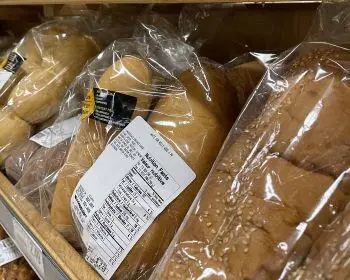
Inside Aisles
Continue on and you’ll find full aisles of:
- Crackers
- Breakfast cereal
- Granola bars
- Energy bars
- Pretzels
- Baking mixes
- Pancake mix
- Pasta
- Couscous

Tricky Places Gluten Hides:
The things we've looked at so far might be obvious. But there are some unexpected places you'll find gluten. Be careful of these items:
- Soya sauce
- Worcestershire sauce
- Some steak and barbeque sauces
- Seasoning mixes
Many sauces, soups, seasonings and other packaged goods have gluten. If a food has a label, check it to be sure.
𝗡𝗲𝗲𝗱 𝘁𝗼 𝗞𝗻𝗼𝘄 𝗪𝗵𝗮𝘁 𝗦𝗮𝘂𝗰𝗲𝘀 𝗮𝗿𝗲 𝗚𝗹𝘂𝘁𝗲𝗻 𝗙𝗿𝗲𝗲?
Don't worry, I've got you covered. Condiments, flavorings, hot sauces, gravy mixes, pasta sauces. It's all here.
Gluten Free Sauces: What to buy, what not to buy and what to watch out for.
Gluten Free Foods: More Variety than You Can Imagine
Gluten free foods fall into two categories:
1. Naturally gluten free food. These are items that are gluten free in their natural form.
2. Gluten free specialty foods. These are special recipes or formulas made to replace foods that normally contain gluten.
Naturally Gluten-Free Foods
Naturally gluten-free food is simply food that, in it's natural form, does not have the gluten protein in it, and that is the bulk of all food that is grown on planet earth.
The word “natural” is difficult to define. For our purposes I think of it as a continuum.
- Whole foods like fruits and vegetables are in their most natural form.
- Some foods have been mechanically processed like grinding grains into flour. I would consider that to be minimal processing.
- Other foods have been significantly chemically altered or even created entirely in a lab. Those are highly processed.

Focus on Whole Foods
Have you ever heard the advice to stick to the outside aisles in the supermarket? That is sound advice for us too.
Bakery aside, the perimeter of the store is where the “whole foods” are generally displayed and most will be naturally gluten free food:
- Fresh vegetables
- Fresh fruits
- Fresh cuts of meat, fish, poultry, seafood
- Eggs and most dairy
Gluten Free Grains
What do you think of when you think of healthy whole grains? Whole wheat bread, whole grain crackers, rye bread, bagels, croissants? Would you be surprised to learn that there are other grains that are part of a healthy gluten free diet? These include:
- Rice
- Corn
- Millet
- Buckwheat
- Quinoa
- Sorghum
- Teff
- Oats*
Here are links to more info about your favorite naturally gluten free foods and what to watch for.
The Refrigerator Section
Most of what you’ll find in the coolers and the dairy case is naturally gluten-free. Just check the labels to be sure. Of course if you are lactose intolerant or casein intolerant you'll be looking for gluten and dairy free substitutions.
- Eggs
- Butter
- Milk
- cream
- Fruit juice
- Plant based milks (almond, soy, coconut, oat*, rice)
- Most yogurt
- Most cheese
- Most ice-cream
The Frozen Food Section
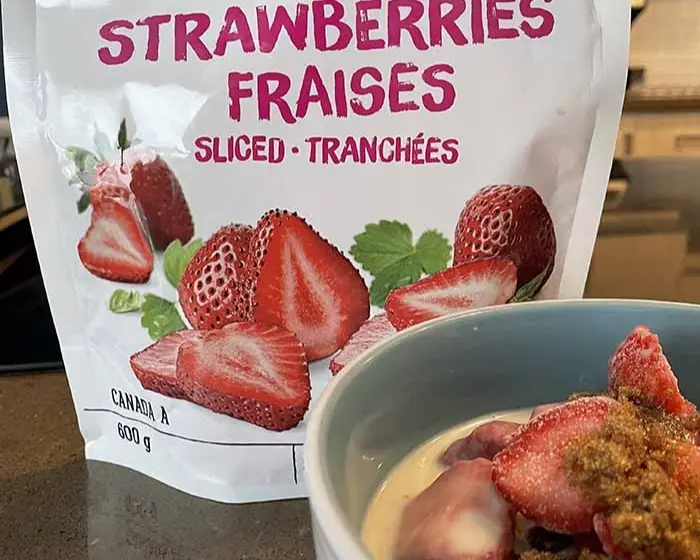 Frozen Strawberries with Gluten Free Oatmeal
Frozen Strawberries with Gluten Free OatmealThe days of keeping a
few frozen pizzas on hand for emergencies are over. The gluten free ones are expensive and not great.
But steer away from the processed prepared meals and focus on whole, frozen vegetables and fruit you’ll find lots to choose from.
Frozen is healthier and tastier than canned. It’s convenient, you don’t have to worry about buying more than you can eat. Try frozen berries with yogurt - it's almost like ice cream.
Don’t forget to check labels just to be sure, then try these:
- Frozen peas
- Frozen beans
- Frozen broccoli
- Frozen cauliflower
- Frozen squash
- Frozen brussel sprouts
- Frozen strawberries, raspberries, blueberries, black berries
- Frozen melons, bananas, grapes, cherries
- Frozen fish, meat or poultry.
Things to watch out for:
- Avoid anything breaded or battered.
- Be careful of anything pre-seasoned
- Watch for anything that's had pasta or other gluten grains snuck in
- Most ice-cream is gluten free but check the label
Always read labels to be sure the producers haven’t snuck any gluten-containing additives in there.
Packages, Boxes and Bags
The center aisles are mostly processed foods, but you can still find a lot that is naturally gluten free:
- Dried beans, peas, lentils
- Gluten free grains like: Corn, Popcorn, Rice
- Dried fruit: raisins, currants, cranberries, apricots, cherries
- Nuts
- Seeds
More highly processed and less healthy but still technically naturally gluten-free in that they don’t contain any gluten:
- Sugar
- Icing sugar
- Baking soda
- Baking powder
- Food coloring
- Corn and other starches
Here is some more info on gluten free food that you may find helpful.
Cans, Bottles, Jars
As much as I tend to steer away from canned products, there are some convenience products that have few ingredients and can serve as sides or as ingredients in your recipes. Some that I keep in my pantry are:
- Canned tomatoes
- Canned beans
- Canned corn
- Canned chickpeas
- Jarred salsa
- Jarred jams and jellies
- Jarred pasta sauce
- Peanut butter
- Applesauce
- Salsa
- Hot sauces
- Ketchup
- Mustard
- Most vinegar
- Pickles
- Oils like olive oil, avocado oil, coconut oil, peanut oil.
- Salt, pepper, single ingredient spices
Things to watch out for:
Popular condiments that may contain gluten are:
- soya sauce
- Worcestershire sauce
- teriyaki sauce
- many barbecue sauces
- some mustards
- malt vinegar
- some spice mixes
You need to look for gluten free versions of these.
Most pure spices will be gluten free but spice mixes often contain gluten.
Also watch out for ready made canned or packaged items like soups, broth or stock, stews, chilis etc.
Always read the labels carefully.
Gluten Free Specialty Foods
These are items that in their familiar form contain gluten, but food manufacturers are producing gluten free versions.
Sometimes you’ll see these in a special gluten-free or “free-from” section. These products in my opinion are a mixed blessing. I’m thrilled that I can get gluten free pasta, wraps, bread, buns, cookies, cakes etc. but there are a few things to keep in mind:
- Gluten free products tend to have highly processed gums and starches added which may be hard on digestion.
- They are very expensive compared to their gluten based counterparts.
- They are often higher in calories and carbs than their gluten based counterparts.
Here are some gluten free products you may find useful:
- Gluten free pasta
- Rice noodles
- Soba noodles
- Rice crackers
- Corn tortillas
- Gluten free crackers
- Gluten free bread, buns, wraps
- Gluten free cookies, granola bars
- Gluten free breakfast cereal
- Gluten free oats and oatmeal
- Other gluten free grains you can use in recipes or cook as a hot breakfast cereal
The Organic Section
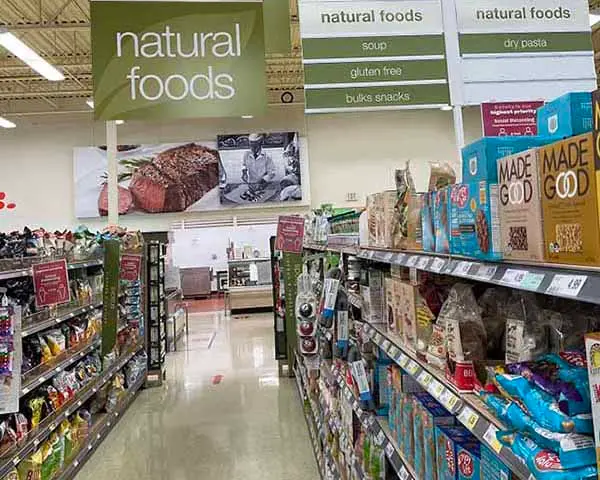
Finally, let's cover the organic section.
Gluten-free and organic are not synonymous, so don’t make the mistake of thinking that you can have anything in this area.
However, in the name of taking a more “natural” approach to eating which to me means avoiding a lot of unnecessary additives and keeping the ingredient list short, organic is a good choice.
These foods tend to use less pesticides in growing and fewer chemicals in processing. They are just in general cleaner choices. As always, check the labels.
Home > Gluten Free Foods
